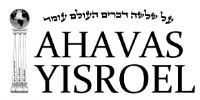Chapter 108 : Chapter 108 The Wheat and Flour for the Matzos

§1 
It is written, "And you must guard the matzos" (Exodus 12:17). From this we learn that we must guard the wheat [from which we make] the matzos with which we perform the mitzvah, to see that no water comes upon them. According to some of the great
halachic authorities, of blessed memory, this watchfulness is to begin from the time the wheat is harvested. The prevailing custom is to follow the opinion of the authorities, who maintain it is sufficient to guard it from the time it is brought to the mill, and thereafter. However, people who are meticulous in their performance of mitzvos, are concerned that [the wheat] should be guarded from the time it is harvested, and this is the proper thing to do. Special care must be taken that the stalks do not remain attached to the earth until they completely dry out and turn white, because then if rain falls on them they will become
chametz, even though they are still attached to the soil, since they no longer need the soil's (nourishment). It is, therefore, fitting and proper to harvest them when they are still slightly green. If you can obtain wheat that was guarded from the time of harvesting for all the days of Yom Tov, so much the better. If this is impossible, you should at least be scrupulous about this for the matzos of both Seder nights.
§2 
If in some of the wheat there was found kernels that were split open or sprouted; the rest may be used for matzah, provided the unfit ones were separated or carefully measured to make sure that there is at least sixty times as much (of the good wheat) as the split and sprouted (wheat). Initially, you should be scrupulous to sort out even wheat from which mice have eaten, or to make sure that there is at least sixty times as much of the good wheat. Wheat that arrived by ship or was stored in pits, if it is dry and hard, and its color has not changed, is kosher for
Pesach. If it was stored in an attic and rain dripped upon it in several places, through the roof, it is forbidden. But if a little snow fell on it or a little water, in one place only, you must remove those kernels which are doubtful, and the rest may be used.
§3 
It is a long established custom in Yisroel, in preparing the mill, to clean it thoroughly, and scrub it in every possible way and to purchase new bags [for the flour.] In a community where there are Torah scholars, they should go to the mill to supervise the cleansing, and to see that the preparations are done properly. In a community where there are no Torah scholars, every God-fearing person should go himself to supervise the preparation of the mill, for it is a greater mitzvah to do it yourself, than if an agent does it for you. It is customary that the first flour milled after this preparation, is not eaten on
Pesach. If moist grain is also ground at that mill, it should be separated with a partition, so that none of its powder should mix with it.
§4 
If a bag of flour has become wet, if only one part became wet, whether it is still moist or already dry, you may take that part in your hand while you empty the rest of the flour, which you are permitted to use. Only the part that has become wet is forbidden. However, if the bag of flour has become wet in several places so that it is impossible to take these steps, then, if it is still moist, the flour is sifted and only the pieces that remain in the sieve are
chametz, but the rest may be used. If mice have eaten some of the flour, it should be sifted. However, if the bag of flour has become dry, sifting is of no use, and the entire flour is forbidden to be used.
§5 
On the day the flour has been ground it is forbidden to be baked, because the flour is then warm and will quickly become
chametz when water is poured on it. Therefore, you should postpone using it for at least twenty-four hours after the grinding.
§6 
The bags for holding the flour preferably should be made new, or at least the seams of the old bags should be opened, and they should be washed thoroughly with warm water and ashes, and by rubbing and beating them.
§7 
It is forbidden to load a bag of flour on an animal, unless thick leather is placed underneath the bag, as otherwise, it will get warm and moist from perspiration. If possible, you should also be careful not to place many bags one on top of the other, because as a result of that, the flour will be heated, and become
chametz in the kneading.








